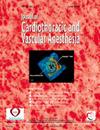预测手术期间肺移植术后功能障碍:囊性纤维化患者的单中心队列研究。
IF 2.3
4区 医学
Q2 ANESTHESIOLOGY
Journal of cardiothoracic and vascular anesthesia
Pub Date : 2025-05-08
DOI:10.1053/j.jvca.2025.04.033
引用次数: 0
摘要
目的:利用术中数据预测囊性纤维化(CF)患者双肺移植术后严重的原发性移植物功能障碍(PGD3)。设计:回顾性单中心队列研究。地点:法国大学医院。参与者:2012年至2019年间接受双肺移植的CF患者。年龄小于18岁的患者以及接受过多器官移植、再移植或术中体外循环的患者被排除在外。干预措施:没有。测量和主要结果:在9个时间点实时记录69个变量。24例患者出现PGD3(15.5%)。术后第3天评估PGD3:使用手术期间从开始(受体和供体变量)到结束的9个预定义时间点收集的数据,建立了预测PGD3的逻辑回归模型。手术过程中模型曲线下面积逐渐改善,由0.764上升至0.892。最佳模型包含五个变量:三个与PGD3风险降低相关(术前肺动脉高压、供体体重指数和手术结束时PaO₂/FiO₂比),两个与风险增加相关(第二次肺动脉夹紧时的乳酸水平和手术结束时体外膜氧合[ECMO]的使用)。PGD3的风险增加了11.48倍(95% CI 4.48-29.39;p < 0.001)和1.29 (95% CI: 1.02-1.63;p = 0.035),在时间点7(第二肺动脉夹紧)乳酸浓度每上升1 mEq/L。结论:该预测模型强调了手术结束时持续ECMO和术中乳酸水平升高对PGD3风险的不利影响。本文章由计算机程序翻译,如有差异,请以英文原文为准。
Prediction of Postoperative Lung Graft Dysfunction During the Procedure: A Single-Center Cohort Study of Cystic Fibrosis Patients
Objectives
To predict severe primary graft dysfunction (PGD3) after double-lung transplantation in cystic fibrosis (CF) patients using intraoperative data.
Design
A retrospective single-center cohort study.
Setting
University Hospital, France.
Participants
CF patients who underwent double-lung transplantation between 2012 and 2019. Patients younger than age 18 and those with multiorgan transplants, retransplantation, or intraoperative cardiopulmonary bypass were excluded.
Interventions
None.
Measurements and Main Results
Sixty-nine variables were recorded in real-time across the nine time-points. PGD3 occurred in 24 patients (15.5%).
PGD3 was assessed on postoperative day 3
A logistic regression model to predict PGD3 was developed using data collected at nine predefined time-points during surgery, from start (recipient and donor variables) to finish. The model’s area under the curve improved progressively during surgery, rising from 0.764 to 0.892. The optimal model incorporated five variables: three associated with reduced PGD3 risk (preoperative pulmonary hypertension, donor body mass index, and PaO₂/FiO₂ ratio at surgery’s end) and two were linked to increased risk (lactate level at second pulmonary artery clamping and extracorporeal membrane oxygenation [ECMO] use at surgery’s end). The risk of PGD3 increased by a factor of 11.48 (95% CI 4.48-29.39; p < 0.001) when ECMO was required at the end of surgery and by 1.29 (95% CI: 1.02-1.63; p = 0.035) for each 1 mEq/L rise in lactate concentration at time-point 7 (second pulmonary artery clamping).
Conclusions
This predictive model underscores the adverse impact of sustained ECMO placed at the end of surgery and elevated intraoperative lactate levels on PGD3 risk.
求助全文
通过发布文献求助,成功后即可免费获取论文全文。
去求助
来源期刊
CiteScore
4.80
自引率
17.90%
发文量
606
审稿时长
37 days
期刊介绍:
The Journal of Cardiothoracic and Vascular Anesthesia is primarily aimed at anesthesiologists who deal with patients undergoing cardiac, thoracic or vascular surgical procedures. JCVA features a multidisciplinary approach, with contributions from cardiac, vascular and thoracic surgeons, cardiologists, and other related specialists. Emphasis is placed on rapid publication of clinically relevant material.

 求助内容:
求助内容: 应助结果提醒方式:
应助结果提醒方式:


